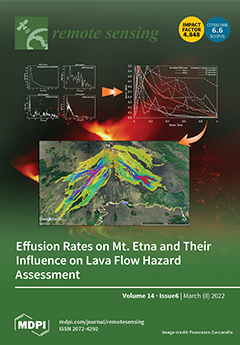Olive trees, which are planted widely in China, are economically significant. Timely and accurate acquisition of olive tree crown information is vital in monitoring olive tree growth and accurately predicting its fruit yield. The advent of unmanned aerial vehicles (UAVs) and deep learning (DL) provides an opportunity for rapid monitoring parameters of the olive tree crown. In this study, we propose a method of automatically extracting olive crown information (crown number and area of olive tree), combining visible-light images captured by consumer UAV and a new deep learning model, U
2-Net, with a deeply nested structure. Firstly, a data set of an olive tree crown (OTC) images was constructed, which was further processed by the ESRGAN model to enhance the image resolution and was augmented (geometric transformation and spectral transformation) to enlarge the data set to increase the generalization ability of the model. Secondly, four typical subareas (A–D) in the study area were selected to evaluate the performance of the U
2-Net model in olive crown extraction in different scenarios, and the U
2-Net model was compared with three current mainstream deep learning models (i.e., HRNet, U-Net, and DeepLabv3+) in remote sensing image segmentation effect. The results showed that the U
2-Net model achieved high accuracy in the extraction of tree crown numbers in the four subareas with a mean of intersection over union (IoU), overall accuracy (OA), and F1-Score of 92.27%, 95.19%, and 95.95%, respectively. Compared with the other three models, the IoU, OA, and F1-Score of the U
2-Net model increased by 14.03–23.97 percentage points, 7.57–12.85 percentage points, and 8.15–14.78 percentage points, respectively. In addition, the U
2-Net model had a high consistency between the predicted and measured area of the olive crown, and compared with the other three deep learning models, it had a lower error rate with a root mean squared error (RMSE) of 4.78, magnitude of relative error (MRE) of 14.27%, and a coefficient of determination (
R2) higher than 0.93 in all four subareas, suggesting that the U
2-Net model extracted the best crown profile integrity and was most consistent with the actual situation. This study indicates that the method combining UVA RGB images with the U
2-Net model can provide a highly accurate and robust extraction result for olive tree crowns and is helpful in the dynamic monitoring and management of orchard trees.
Full article





